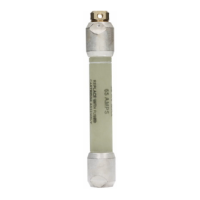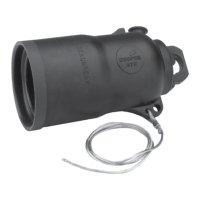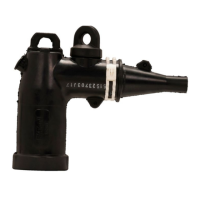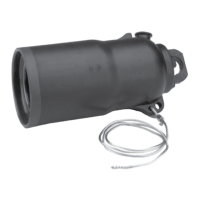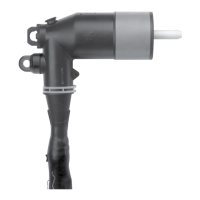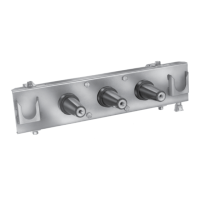Type VSA12, VSA16 and VSA20/800 maintenance instructions
3 MAINTENANCE INSTRUCTIONS MN280064EN October 2017
Table 5. Current ratings
VSA-12 VSA-16 VSA-20
Continuous current rating (A) 800 800 800
Symmetric interrupting current (A) 12,000 16,000 20,000
Cable charging current (A) 2 2 2
Magnetizing current (A) 28 28 28
3 Second current, symmetric (A) 12,000 16,000 20,000
Momentary current, asymmetric (A) 20,000 25,600 32,000
Table 6. Mechanical specifications
Operating temperature (°C)
Minimum -30
Maximum +50
Closing mechanism Spring operated
Opening mechanism Spring operated
Contact gap (inches (mm)) 0.5 (13,7)
Close contact travel time (cycles (ms)) 0.5 (8)
Open contact travel time (cycles (ms)) 0.5 (8)
Maximum arcing time (cycles (ms)) 1.0 (17)
Interrupting time (cycles (ms)) 2.5 (42)
Allowable contact erosion (inches (mm)) 0.125 (3,2)
Opening time (24 vdc solenoid, signal to
contact part) (ms)
19-25
Closing time (24 vdc solenoid, signal to
contact make) (ms)
32
Maintenance
Frequency of maintenance
Because reclosers are applied under widely varying operating
and climactic conditions, maintenance intervals are best
determined by the user, based on actual operating experience.
To assure proper and trouble-free operation, reclosers must be
maintained when they have operated the equivalent of a rated
duty cycle (see Table 2). In the absence of specific operating
experience the following procedures are recommended:
When the type VSA recloser is operated under usual
service conditions as defined in ANSI (American
National Standards Institute) C37.60, “Standard
Requirements for Overhead, Pad Mounted, Dry Vault
and Submersible Automatic Circuit Reclosers and Fault
Interrupters for AC Systems”, it is recommended that
the following maintenance procedures be performed at
the completion of an equivalent duty cycle.
ote:N ANSI C37.61, “Guide for the Application, Operation
and Maintenance of Automatic Circuit Reclosers”,
gives a procedure for converting the rated standard
duty cycle into an equivalent duty cycle based on the
actual operating duty of the recloser.
However, if the recloser has not completed an equivalent
duty cycle within THREE YEARS, it is recommended
that an inspection be made at that time. (See Steps one
through ten of “Periodic Maintenance Inspection.”)
Periodic maintenance inspection
Each maintenance inspection at the completion of an
equivalent duty cycle should include at least the following:
1. Bypass and remove the recloser from service:
a. Disconnect the control cable from the recloser.
b. Remove the fused pullout switch to de-energize
the 240 Vac power source to the operator
mechanism.
2. Visually inspect external components:
a. Check for broken or cracked bushings; replace as
necessary. (See “Shop Maintenance Instructions—
Bushings” for procedure.)
b. Check for paint scratches and other mechanical
damage; touch up to inhibit corrosion.
3. Visually inspect the operator mechanism:
a. Check interior of the operator mechanism cabinet
for accumulation of dust and dirt; clean as
necessary.
b. Check door gasket for effectiveness of seal, repair
or replace as required.
c. Visually inspect all components for worn or broken
parts and corrosion; replace as necessary.
d. Check for broken or loose wiring terminals at the
various components and terminal boards.
CAUTION
Do not use excessive force when replacing brush holder
caps; excessive tightening may crack the caps.
e. Check the motor brushes for excessive wear and
burning; replace as needed.
f. Record counter reading in the record log.
4. Close and trip the recloser manually several times to
check mechanical operation. (See“Manual Operation— To
Close the Recloser” for manual operating instructions.)
5. Perform a dielectric withstand test to check the
insulation level of the recloser and the vacuum integrity
of the interrupters. (See “Insulation Level Withstand
Tests” for procedure.)
6. Remove cabinet side panels to expose the internal
components.
7. Check the contact erosion of the vacuum interrupters:
a. Locate the scribe mark on the moving contact rod
at the top of the interrupter. (See Figure 3.)

